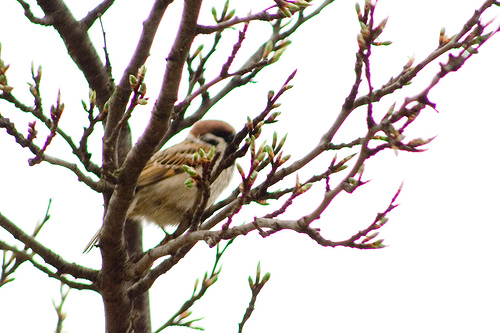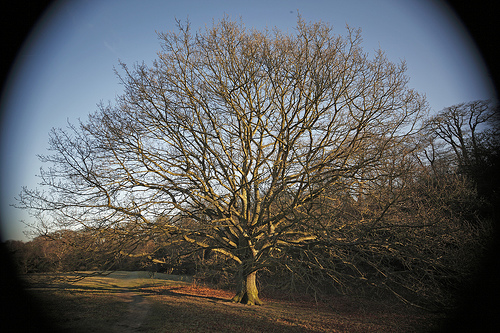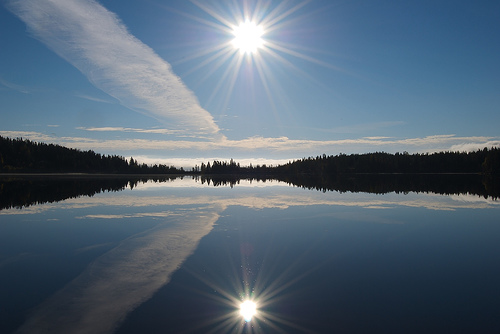The camera aperture is one element in the camera which perhaps has the most effects on your picture. Here’s a collection of some of these effects caused by the lens aperture. So the next time you use a wide or a small aperture, know that you are not changing the exposure.
-
Depth Of Field And Aperture
The primary purpose of aperture settings on the camera is to attain depth of field. The depth of field refers to the area of sharp focus in a photograph. The aperture plays an important role in determining the depth in the composition. The smaller the aperture, more is the depth in the composition thus, putting everything in sharp focus. On the other hand, a wider aperture enables you to achieve a shallow DOF — effectively focused subject amidst defocused background and the foreground.
-
Aperture Is Used For Creating Beautiful Bokeh
Bokeh is the terminology for the aesthetic blur achieved at shallow depth of field. Bokeh is the the way the lens renders out-of-focus points of light. When the camera is tuned for shallow dof and there is an effective brightness in the background of the subject (due to lights and reflections), the camera lens renders beautiful imagery of the out-of-focus points termed bokeh. DOF and the bokeh are two different things. Check out the difference between the bokeh and DOF here.
-
Aperture Is Not Used For Exposure
As contradictory as it sounds, aperture is not used to control the exposure. Not until you set the camera to fully manual mode. On other modes like the aperture priority mode, the fine-tuning the aperture helps in achieving the desired depth of field. The aperture priority mode offered by the camera is a semi-auto mode. Thus, when the user fine-tunes the aperture, the camera intelligently handles the rest of settings (like shutter-speed and even ISO) for ensuring proper exposure for the scene.
-
Chromatic Aberration Is Not An Aperture Effect
The chromatic aberration distorts the color information of the image by producing the fringes of colors along the boundaries that separate dark and bright parts of the image. The chromatic aberration is caused due to the failure of a lens to focus all colors to the same convergence point and not because of in-optimal aperture. The chromatic aberration is not a side-effect of a small aperture but of the lens optics viz. glass.
-
Aperture Can Be Used For Vignetting Effect
Vignetting is the technique of reducing the brightness of image at the edges, so as to draw the viewer’s attention to the center of the frame. At other times it is considered an unwanted artifact. The vignetting effect can be achieved by using the special lenses (or filters) and also during post-processing.
When a photographer uses the special lenses for creating the vignetting effect in camera, the aperture plays a crucial role in darkening the edges. The darkening can be gradual or abrupt, depending on the lens aperture. The smaller the aperture, the more abrupt the vignetting as a function of angle. On the other, there are some lenses which produce undesirable vignetting effect, which can be controlled or completely cured by a reduction in aperture of 2–3 stops.
-
Aperture Results In Loss Of Sharpness
When you are using a wide aperture, the depth of filed is very limited. The areas in the background and foreground of the focal plane will be blurred. As you close down to a smaller aperture, diffraction rolls in killing the sharpness.
-
Diffraction Spikes On Small Apertures
On smaller apertures the diffraction becomes increasingly prominent. This can be used for some very creative effects. This diffraction spike can be used as a creative technique while photographing the lights (or any source of light for that matter) to get the star-light effect. You can generate the star lights by resting the camera on the tripod, focusing on lights and tuning the camera to a very small aperture. This results in scattering of lights from the light source, forming beautiful star like formations of the diffracted lights.
-
Understand The Optimal Aperture
Optimal aperture is the point beyond which the image-sharpness reduces and the impact of diffraction becomes profound. The optimal aperture varies with the camera lens and you will have to run your own tests to figure out the sharpest aperture.
What other effects of aperture do you notice?






Many ppl believe it. But when it comes to the camera away from the world of books, I tried to use aperture to control the exposure. Out of the 11 semi/auto modes in my camera it only worked on 1: the fully manual mode. Any good reason I should recommend my visitors to use aperture as a control for exposure?
“As contradictory as it sounds, aperture is not used to control the exposure. Not until you set the camera to fully manual mode. On other modes like the aperture priority mode, the fine-tuning the aperture helps in achieving the desired depth of field. ”
Of the three elements of the exposure triangle (ISO, Aperture and Shutter Speed), ISO is the property of the film (or the sensor in case of dslr) which when considered a constant (since high ISO is not recommended in any case), Aperture forms half of the equation in terms of exposure.
If you have noticed, in fully manual mode, you cannot choose the exposure setting, the exposure is defined by the values you choose for ISO, Aperture and Shutter Speed. In aperture priority mode the camera chooses a corresponding shutter speed to get the perfect exposure.
Set your camera in Shutter Priority mode and then what will the camera use for the right exposure? Answer is Aperture.
Shutter Speed is a property of the camera body while Aperture is a property of the lens and Aperture ranges are usually limited by the cost and type of the lens. But that doesn’t make the statement “aperture is not used to control the exposure” any correct.